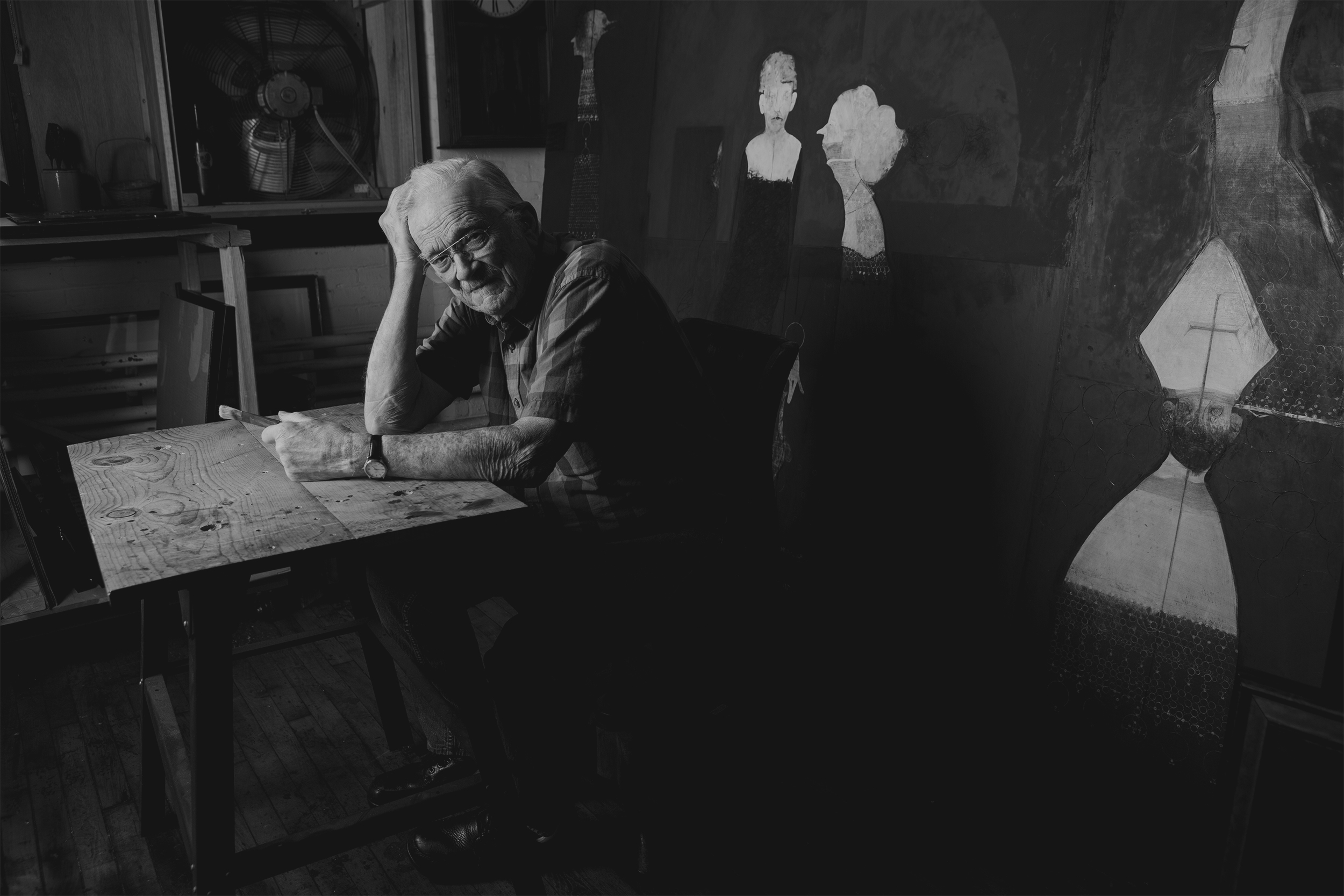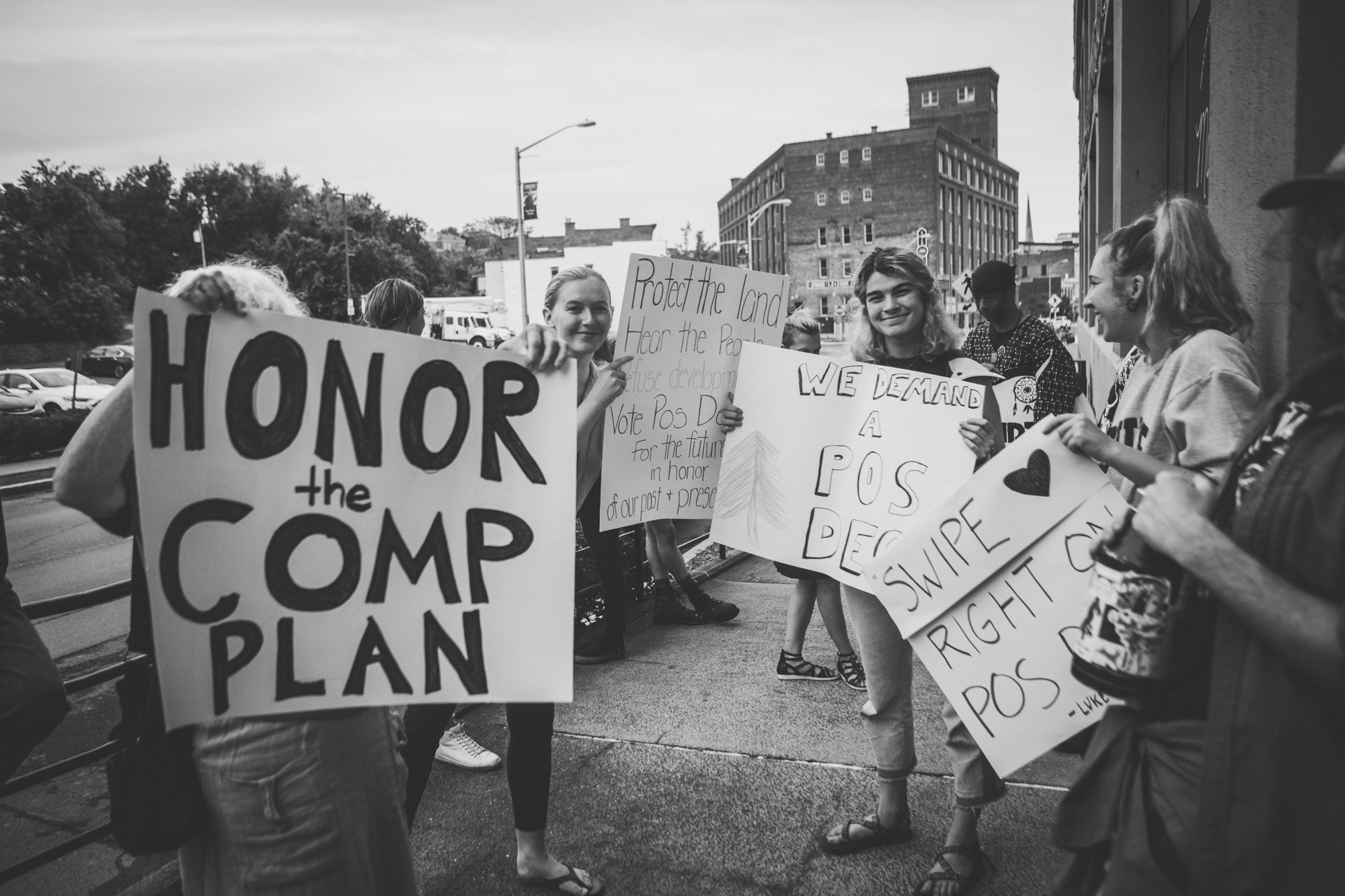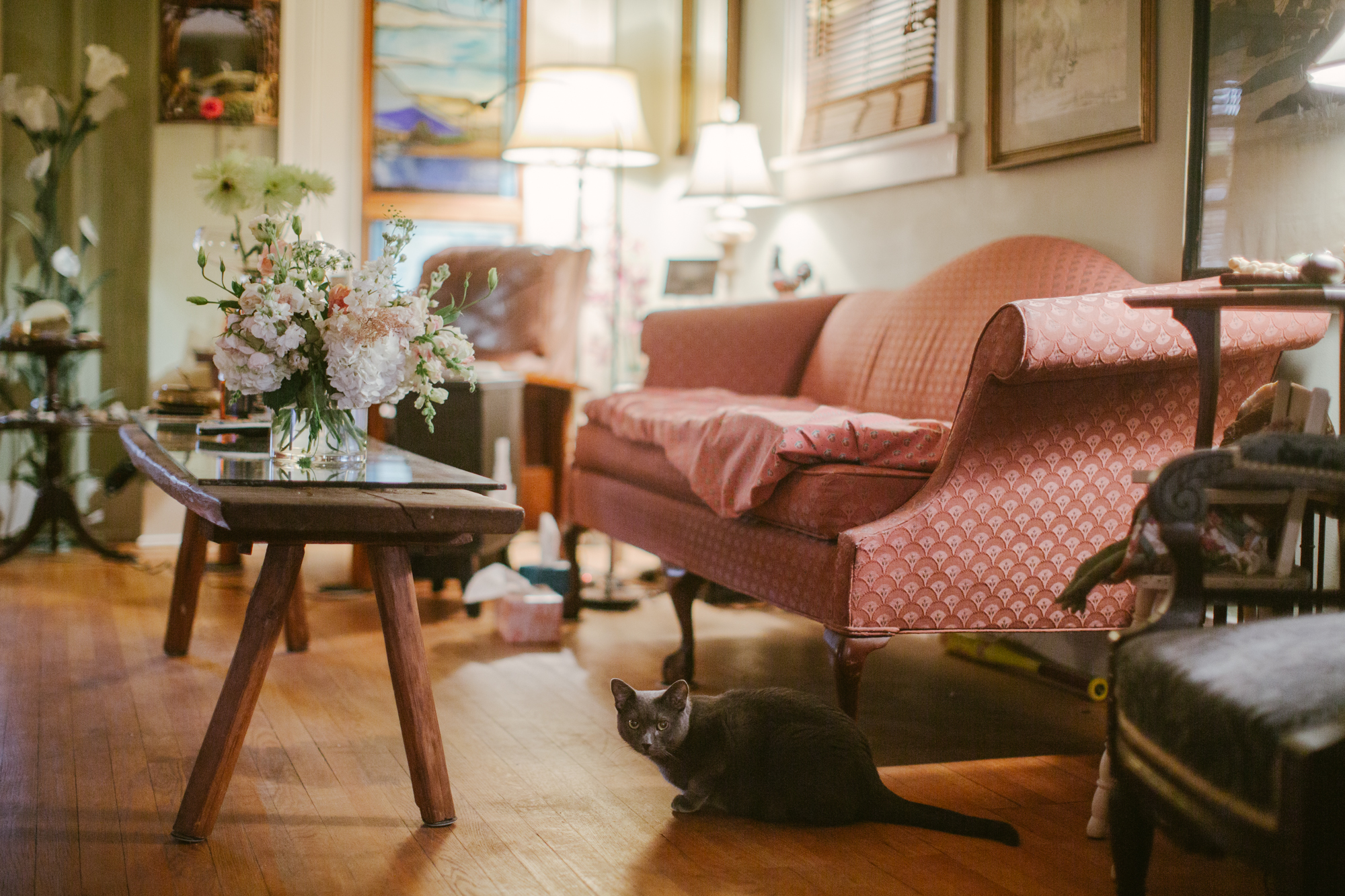Our Dialogue – In Memory of Artist Robert Ernst Marx

I was saddened to recently learn of the passing of artist Robert Ernst Marx, back in 2020. I had the privilege of spending time with Robert back in 2014, upon finding an etching he created back in the 60’s at an estate sale in Saratoga Springs,NY. Upon returning home with this newfound treasure, I did my due diligence to try to uncover who the artist was. Much to my delight, I had discovered that Robert was still actively working out in Rochester, NY at the time – he was 90 then.
I managed to connect with him and took the 3 hour drive from Saratoga out to Rochester to meet him in the studio with the intention to take some portraits, newly diving into the world of editorial portraiture – however I had no idea how much more I would receive from my visit. Most of our brief time together was spent talking about his personal and artistic philosophy, his experiences as an artist working along with colleagues such as Leonard Baskin and the progression of his work from drawings and etchings to large scale oil paintings and sculpture. Only after several hours spent getting to know Robert, did I then pull out my camera and begin documenting him at work in his studio. I ended up visiting Robert a second time a few weeks later. On this visit, at the end of day, he invited me to his home. After a quick stop at Wegmans to pick up some groceries, we ventured to the home he shared with his wife Francie. The walls were adorned with family photographs and a wide variety of small artworks, warm light illuminated bookshelves filled with books, and I occasionally spotted a piece of his own amongst the menagerie of trinkets and knick knacks that were collected by the two of them over the years. The three of us shared a meal, conversation conversation about art, politics, social justice and traveling, and I caught a glimpse of the pure adoration and respect that Robert and Francie had for each other.
There was a deep grappling of the human condition in Robert’s work – something I connected with deeply. He was driven by exploring themes of the arrogance of power, personal fears and insecurities, social justice and the conventions and systems we can find ourselves trapped in – often of our own volition. Some of these themes were very apparent on the surface of his work – but his pieces begged for deeper reflection. The hollow gaze of his subjects pulled you into all the layers his would reveal – part of his process of unveiling and recovering layers that may have been painted months or years ago – further lending a subtle but intentional depth to the images.
Looking back on these images I took of him now that he is gone, I feel that they have also taken on a new layer of meaning for me. I didn’t know Robert for long, or all that well – but in the fleeting time we had together he left an impression on me that will last a lifetime.














